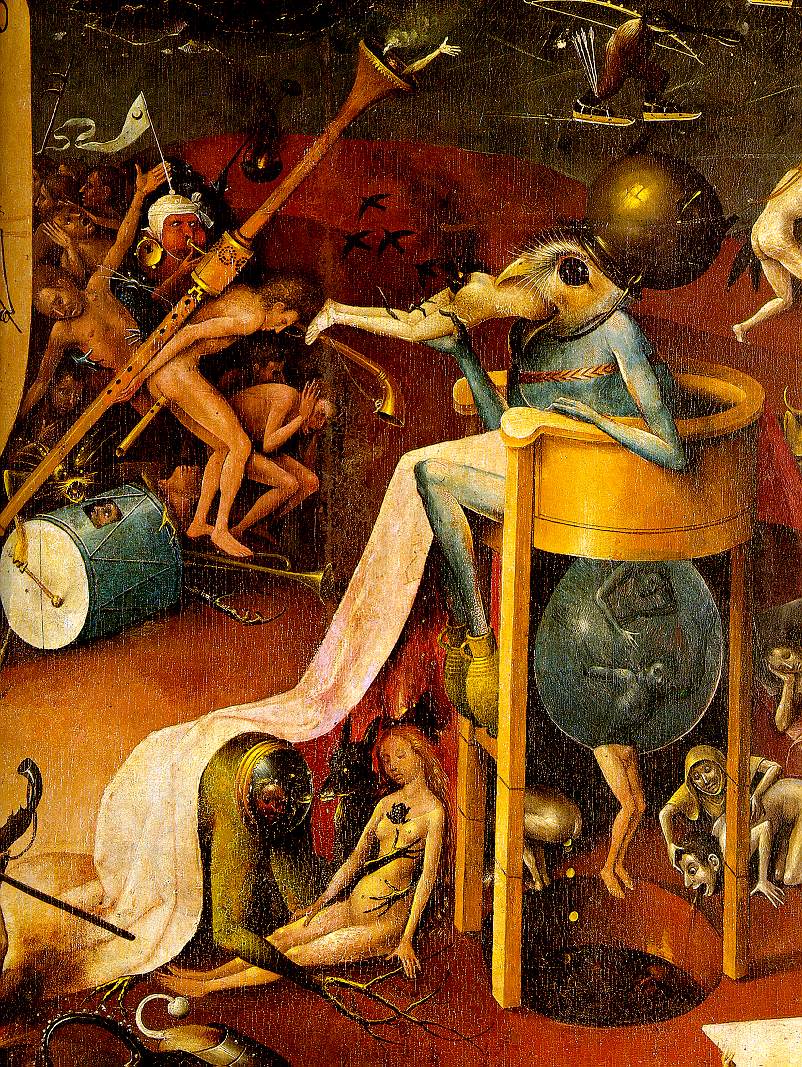He rubbed the asymmetrical beak and chaos took form around him. "Ah," he thought. "They play the music of my mind." And as the chaos spread, men made their own symphony of it; after all, if you're falling into chaos, why not dive? And their misery increased and this greatly pleased the deity, who sent out hellish emissaries from his own heart to mingle in the forms of decay. Still, humanity beat on, and demons became intermingled with them, so that the deity's thoughts became a methodic madness, and still he was pleased. It was the demons who rebelled first, furious at being cast into order from out their fundamental chaos, and they ordered humanity into an amorphous mass of flesh to march upon the deity who sits upon the hole of the world. They sounded the war drums, and blew their flute, and still the deity was pleased; however, out of the flute came a primordial bubbling, a new humanity, and with it the fullness to finally stopper the hole that chaos sits upon.
Semiotic Breakdown: For Saussure, language 'exists only by virtue of a sort of contract signed by the members of a community.' (Saussure 850) The Hieronymous Bosch picture is a definite picture of community, and its very artistic style can be described as gusto or abundance, an over-saturation of image. Although the picture has some resonance of Dante, and a hell-driven proleptic imagination, it, like language, "must, to put it correctly, be studied in itself." (Saussure 851) It can be related to Shakespeare in that their is a kind of chaos that yields to a form, which seems to be the very subject matter of the piece - its "combination produces a form, not a substance." (Saussure 857) "Signs function...not through their intrinsic value but through their relative position," (Saussure 861) and all of the familiar human forms are tiny and cloistered around the uncannily strange hybrid figure on the throne. The human form is rendered somewhat realistically, but that realism is shattered by the strange shapes and backgrounds that weave throughout them, such that 'between them there is only opposition.' (Saussure 863) The strange shape on the throne sits above a hole, which symbolizes an absence, and chaos dances around him in a primordial state described only by its relation to that absence, presenting a world where 'there are no pre-existing ideas, and nothing is distinct before the appearance of language.' (Saussure 856) That presence, fundamentally hybrid and strange, is like the word in language, for 'a particular word is like the center of a constellation; it is the point of convergence of an indefinite number of co-ordinated terms.' (Saussure 866)
Saussure. "Course in General Linguistics." ed. Leitch, Vincent B. The Norton Anthology of Theory and Criticism. 2nd ed. New York: W. W. Norton &, 2010. Print.

No comments:
Post a Comment